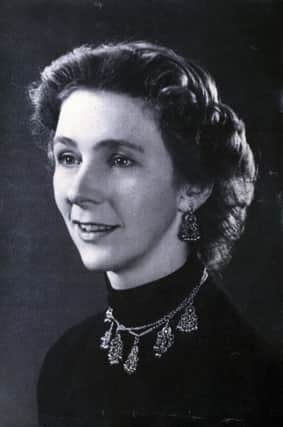Obituary: Jane Fawcett, MBE


Jane Fawcett was one of the intrepid decoders at Bletchley Park during Wold War Two whose secret work helped to turn the war in the Allies’ favour. It was so secret that no one, for sixty years, talked of their work in the Oxfordshire mansion. The redoubtable Fawcett played a key role in the planning in the days surrounding the sinking of the Bismark in 1941. Having joined Bletchley in 1940 Fawcett was immediately under “unfathomable pressure” as she recalled years later. “We knew that what we were doing was making all the difference.”
That pressure was critically evidenced during the Bismark crisis. The Bismark was a powerful German battleship and had already caused havoc by sinking HMS Hood. Fawcett was stationed in Hut 6 – where the German air-force and army Engima ciphers were decoded – and on a 24-hour shift. She was deciphering messages to and from Berlin and intercepted messages from General Hans Jeschonnek of the German High Command who wanted to know the whereabouts of his son who was a member of the crew of the battleship. Fawcett picked up a baffling message: “I suddenly got a thing on my plate from the Enigma machine which said Brest.” She immediately sent the message to the Admiralty.
Advertisement
Hide AdAdvertisement
Hide AdThe fatal indiscretion by the Bismark’s radio operator and Fawcett’s quick thinking proved a deciding factor in the operation. The Royal Navy attacked and sank the Bismark. Fawcett’s strict following of procedure proved of great strategical importance. The Fuhrer was said to be “melancholy beyond words” on hearing of its sinking.
The cheering echoed round Hut 6 that evening when they heard on the BBC news that the Bismark had been sunk.
Jane Caroline Fawcett (nee Hughes), whose father was a clerk at a City Livery Company, was educated locally and then won a scholarship to the Royal Academy of Dramatic Art but was also offered a place to study with the Royal Ballet. After three years of training Fawcett was being cast in several ballets but the company’s principal, Dame Ninette de Valois, informed her that she was too tall and “your back is too long”. Instead Fawcett spent some months in Germany learning the language. It was then that she got a letter from a friend at Bletchley saying, “You must come and join us.” Secrecy was such she told her parents she had “some sort of job in the Foreign Office.”
Fawcett’s years at Bletchley were indeed stressful. She was billeted in a council flat near a brickworks with a family whose two young lads made much noise. Sleep was not easy especially after night shifts and she pulled some strings and moved to a rather grand near-by mansion, Liscombe Park, where Fawcett and friends occupied the staff quarters. Hut 6 was far from comfy: leaking windows and poor lighting, one friend of Fawcett called Bletchley “a Victorian monstrosity.” Fawcett recalled, “We were always working against time. There was always a crisis, a lot of stress and a lot of excitement.”
There were dangers walking through the Oxfordshire countryside at night in the blackout. After she had finished a shift at midnight Fawcett would walk through the darkened town with a hammer concealed in her handbag.
Fawcett took part in Bletchley’s “jolly reel club” and was an enthusiastic participant in the Scottish country dance evenings on the front lawn in the summer. She also sang in the various choirs – choral and madrigals – and was involved in the amateur dramatic societies
After the war Fawcett won a scholarship to the Royal Academy of Music and was a professional singer until 1963. She then became the chief executive of the Victorian Society which campaigned to preserve much of the period’s architecture. John Betjeman was its leading spokesman but Fawcett became well known (especially in the boardroom of British Railways who dubbed her The Furious Mrs Fawcett) for preserving many iconic buildings – notably St Pancras Station in London and the Midland Grand Hotel in Manchester.
Fawcett retired in 1976 when she was appointed MBE and elected an honorary fellow of the Royal Institute of British Architects.
Advertisement
Hide AdAdvertisement
Hide AdLast year Fawcett returned to Bletchley and was introduced to the Duke and Duchess of Cambridge. “As we were preparing to leave we suddenly heard in the distance this wonderful, very distinctive, sound of a Hurricane engine about to do a flypast. Then he flew off into the evening sun. We were just bowled over.”
Fawcett married Ted Fawcett, who had seen distinguished in the Royal Navy, in 1947 and they lived in West Kensington. Her husband died in 2013 and she is survived by their son and daughter.
ALASDAIR STEVEN